All products featured are independently chosen by us. However, SoundGuys may receive a commission on orders placed through its retail links. See our ethics statement.
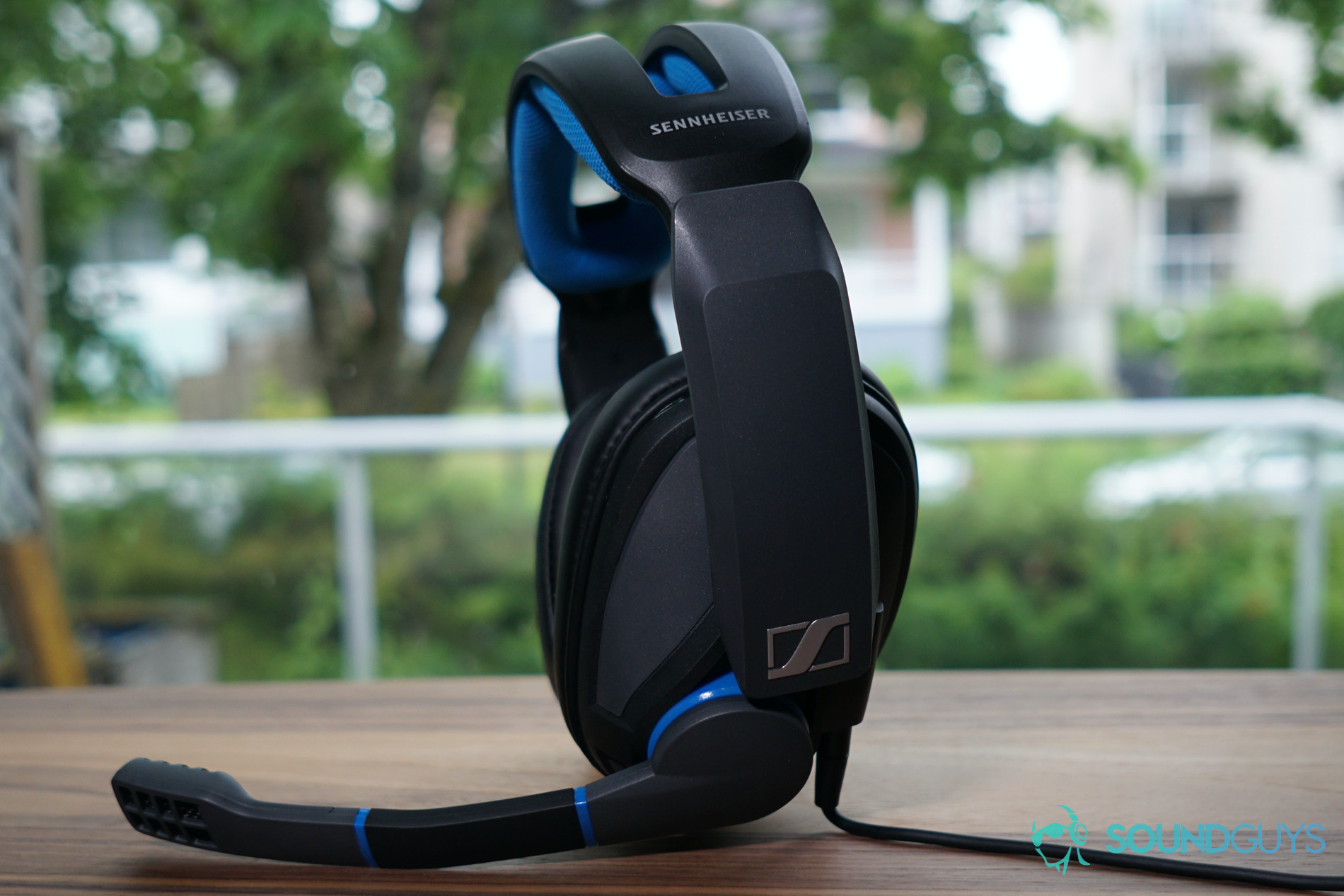
EPOS Sennheiser GSP 300 review
April 27, 2021
EPOS Sennheiser GSP 300
Sennheiser makes some of the best headphones on the market, but the company’s gaming headsets tend to miss the mark. They’re reliably good, but often held back by one or two quibbles—usually revolving around an extra feature or a less core design element. The Sennheiser GSP 300 aims to avoid all that, offering just the basics for under $100.
A lot of gaming headsets offer the basics and more for the same price, though—how does this one match up?
Editor’s note: this EPOS Sennheiser GSP 300 review was updated on April 27, 2021, to address the EPOS H3 gaming headset.
Who should get the EPOS Sennheiser GSP 300?
- PC gamers looking for something with a split headphone/mic input to plug directly into their computer.
- Console gamers who don’t mind having an adapter hanging off their controller.
What is it like to use the Sennheiser GSP 300?
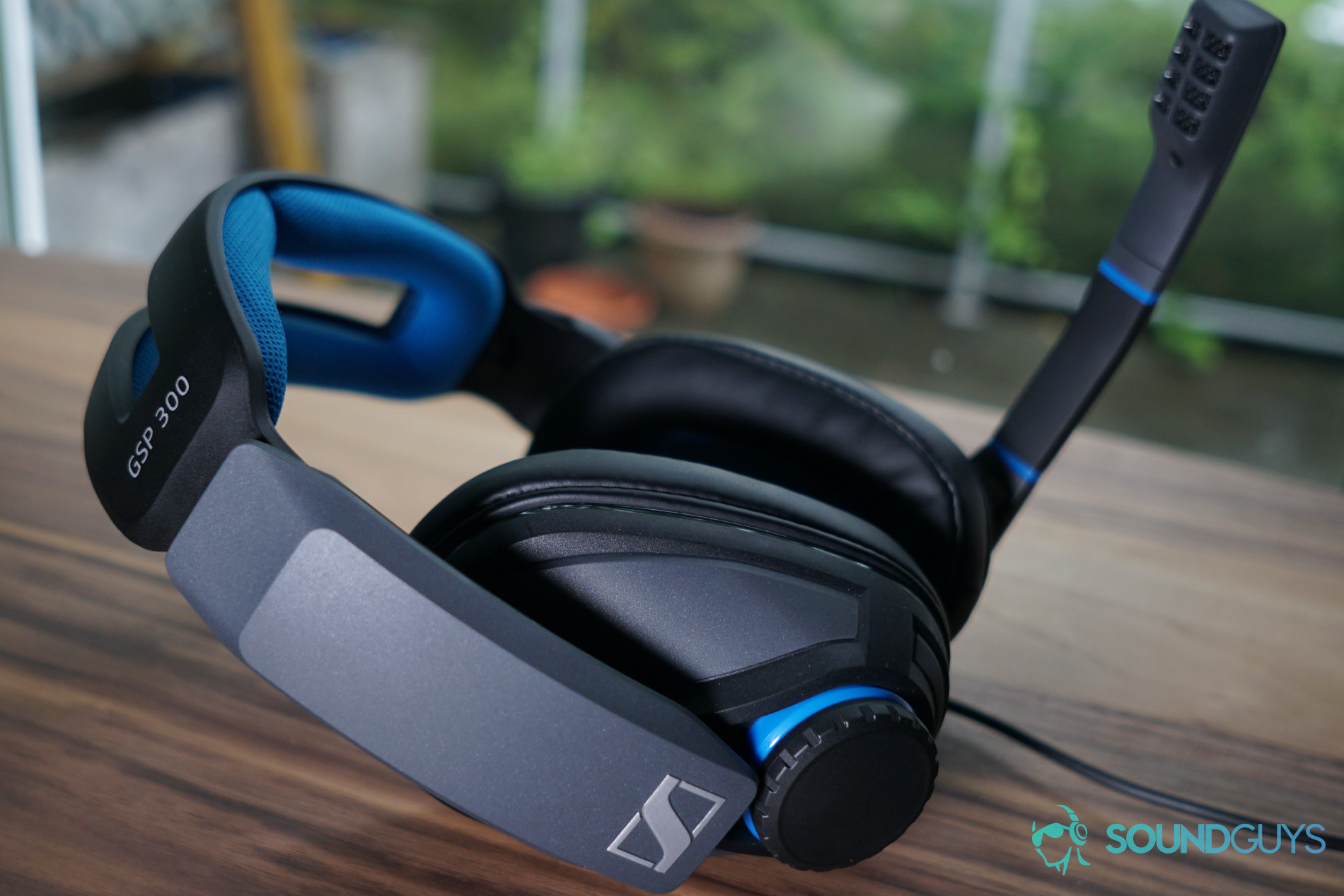
From a certain perspective, the EPOS Sennheiser GSP 300 is actually little bit confusing. On one hand, this is a very simple gaming headset: it sports a split 3.5mm analog connection, and so offers just the basics from a features perspective—this is a pair of stereo headphones with a mic attached to it. However, while the function may be simple, the form is anything but.
You might like: How gaming headsets give you the edge
This gaming headset features a similar design to Sennheiser’s other GSP gaming headsets, which isn’t inherently bad. It’s made entirely of plastic, and while it doesn’t feature any LED lights or strange sharp angles, it positively screams “gaming headset.” The cushions on the headband are covered in a bright blue mesh, and the frame is bulky and angular. The headphones connect to the band with a tilting joint that can bend any way you like, within reason. The attached microphone is, in a word, huge—it’s got a thick bendable arm and a big head.
In short, the Sennheiser GSP 300 is a pretty conspicuous device, but that’s not necessarily something to hold against it.
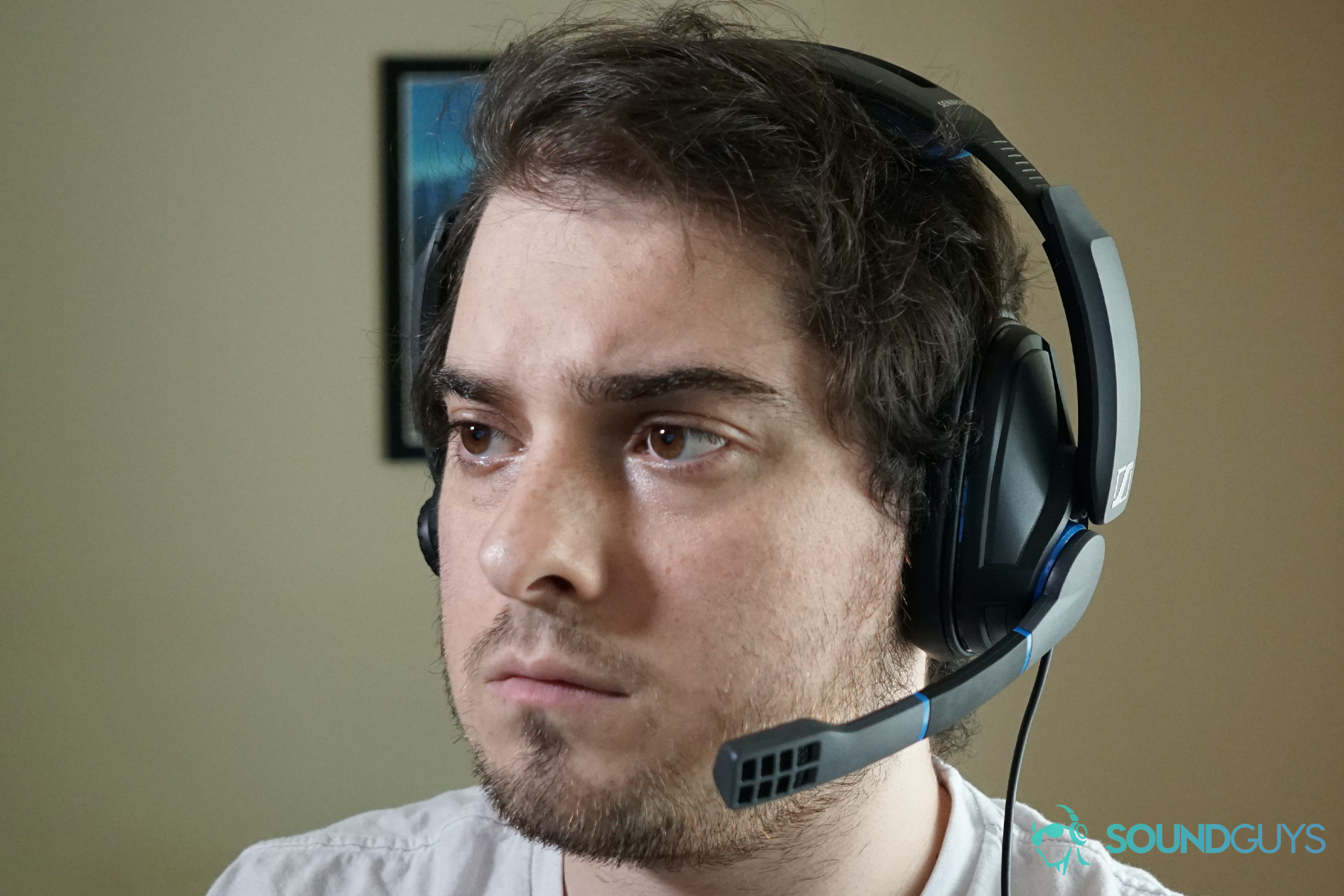
The plastic build makes this headset exceptionally lightweight. The headband adjusting mechanism may look a little clunky, but it works and, coupled with the tilting headphone joints, it makes for a really comfortable experience. The headphone pads are covered in leatherette, and had no trouble establishing a seal around my ears. Unfortunately, gamers with glasses won’t find it so comfortable, and Sennheiser doesn’t sell velour replacements.
Actually using the EPOS Sennheiser GSP 300 headset is very straightforward. There aren’t a lot of bells and whistles with this thing, and so there’s not much to clutter the interface. The microphone is permanently attached to the headset and mutes when flipped up—you’ll hear a click when it happens. There’s also a big volume dial on the right headphone, and that’s all there is to it.
Gaming with the Sennheiser GSP 300
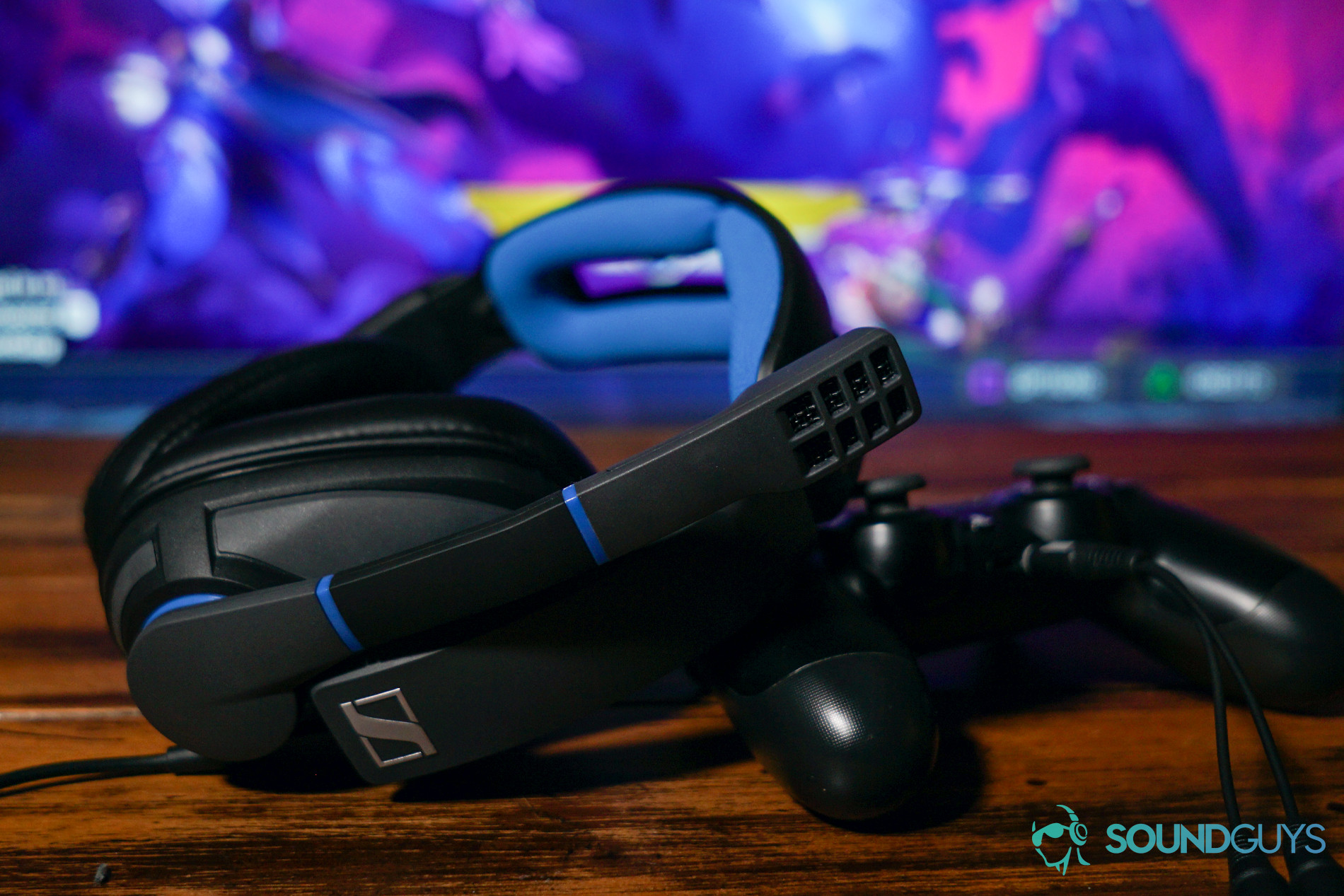
Gaming with the EPOS Sennheiser GSP 300 is similarly straightforward. This is a 3.5mm gaming headset, with no surround sound or any software-based features, so it’s pretty much just a plug-and-play affair. It’s absolutely comfortable enough for long gaming sessions, and I never ran into any issues playing games and chatting over Discord for hours.
Related: A guide to gaming headset apps
The headset is well suited to games like League of Legends and Dauntless on PC, but it lacks surround sound for battle royale and shooter games like Fortnite and Overwatch. This isn’t necessarily such a serious issue, as surround sound is more of a luxury feature. It won’t make you better at a game, it’s just another source of information. Some games, like Overwatch, even offer in-game virtual surround sounds settings, so it’s far less of issue there.
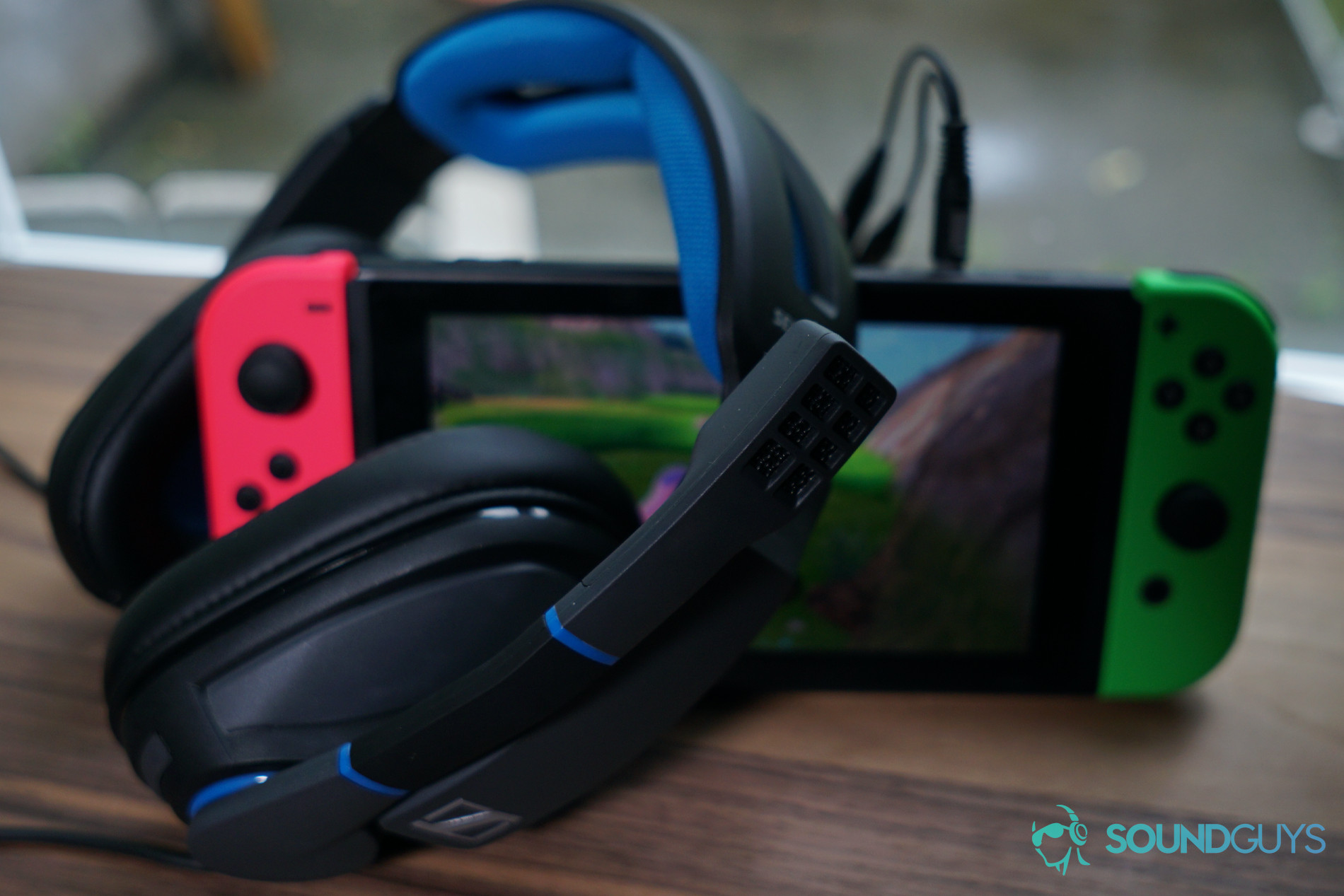
Playing on console is similarly straightforward, but you’ll need the included 3.5 dongle to do it. Unfortunately, even though the headset defaults to a split mic/headphone connection, you can’t use it with the app-based Nintendo Switch voice chat system. Regardless, once you use the dongle, the headset works just fine on every console.
How does the EPOS Sennheiser GSP 300 sound?
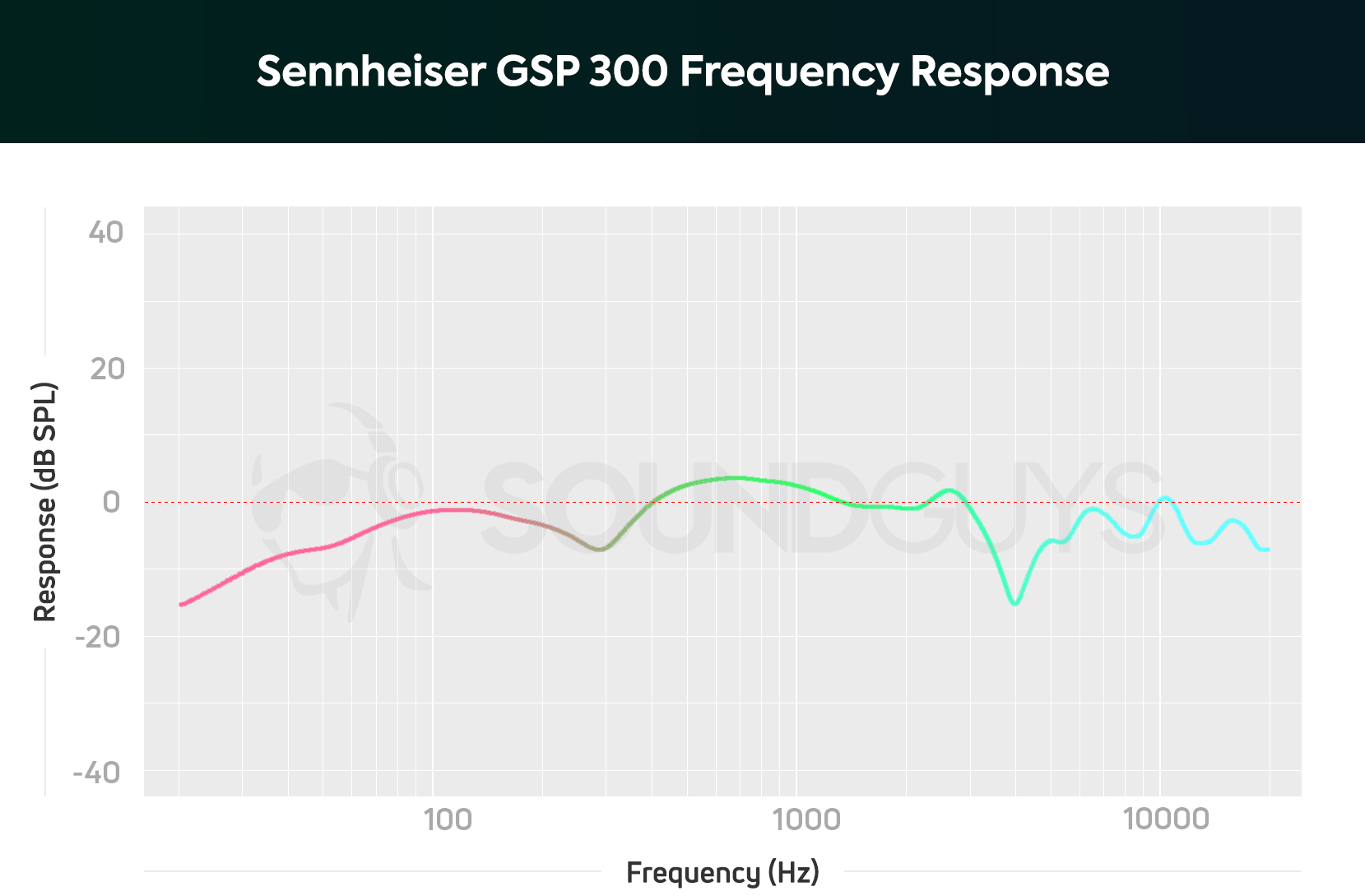
The GSP 300 reproduces relatively accurate audio; though, there are definitely a few things worth mentioning. There’s a pronounced de-emphasis in the sub-bass range, as well as in the high range around 4kHz. Outside of that, there’s generally accurate output in the mids and bass range.
In music, frequency response like this is pretty decent for just about whatever you want to listen to. The de-emphasis in the very low bass range can make electronic music sound a little less punchy. Some bass drums and bass guitar notes can be hard to perceive too, but you’d have to be listening pretty closely to notice. The real trouble you might run into is songs where bass lines are already rather faint. In Bikes by Rubblebucket, the bass guitar line normally sounds subdued but audible, yet it’s genuinely difficult to hear while using the Sennheiser GSP 300.
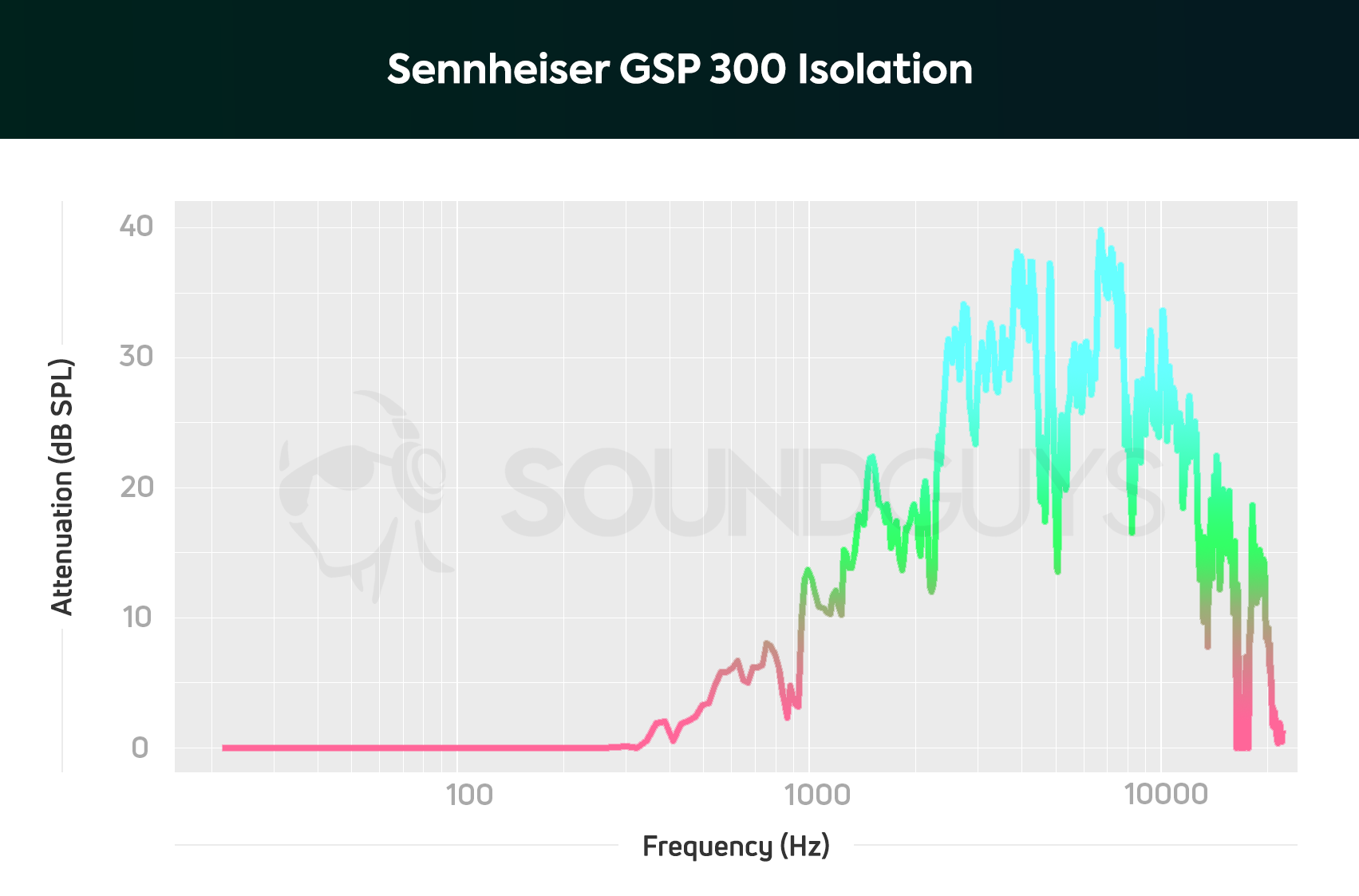
A sound profile like this is less of an issue for games. The de-emphasis in the bass range might make some of the really low rumbling in an explosion seem a little quieter, but you’re never going to feel like it’s quiet relative to everything else going on in a game. Plus, it makes it easier to hear more nuanced sounds like footsteps, enemies reloading nearby, and even your chatting teammates.
The Sennheiser GSP 300 features pretty good isolation for a gaming headset. Like most gaming headsets, there’s nothing approaching active noise canceling here, but you shouldn’t run into any issues with the typical creaky flooring and whirring fridges that pop up at home. It won’t fare quite so well outside, but from the connection method to the physical design of the headset, it’s clear the GSP 300 was never intended for that anyway.
How does the microphone sound?
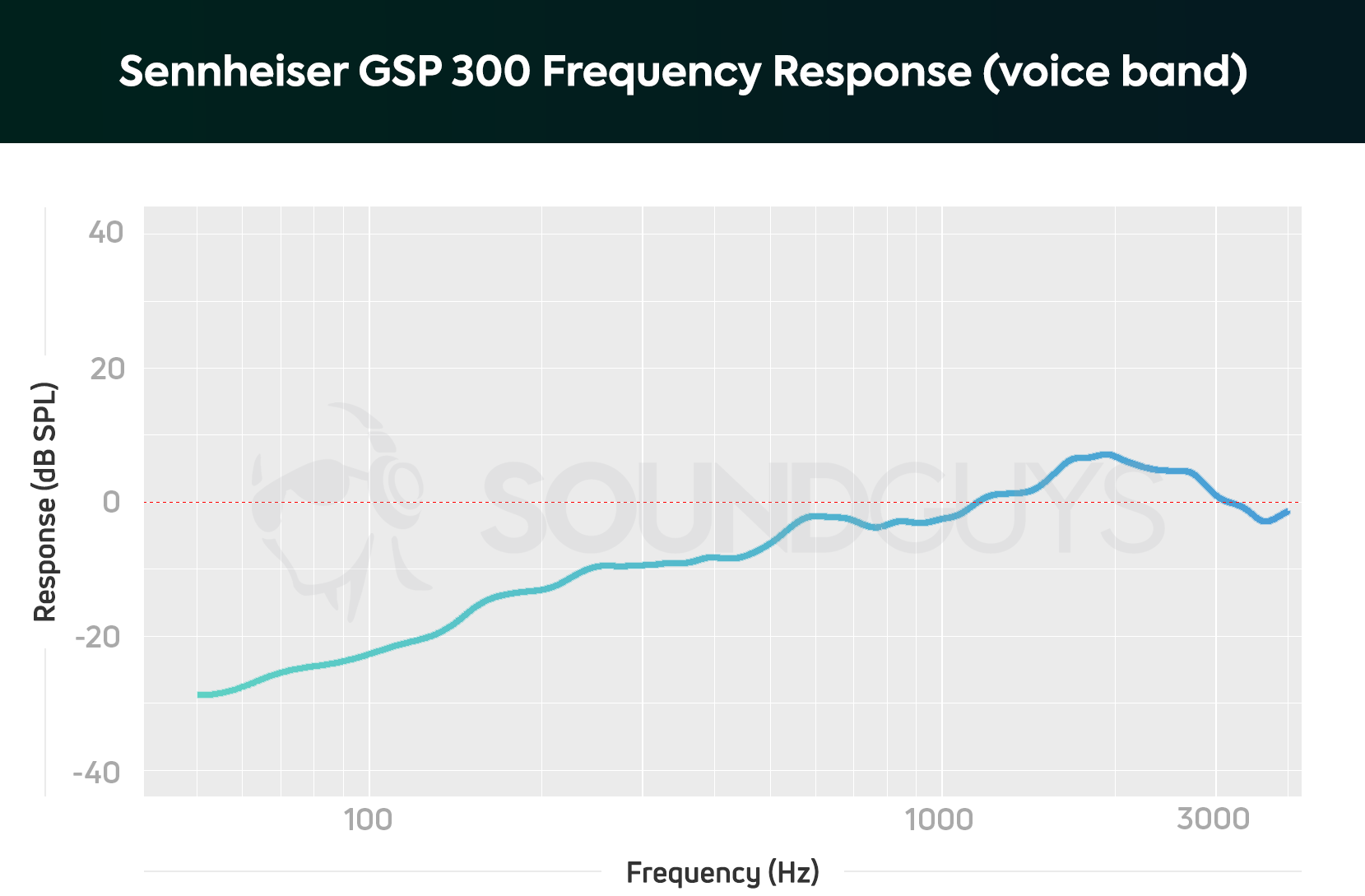
The Sennheiser GSP 300 features a pretty average microphone for a gaming headset. There’s a notable de-emphasis in the bass and mid range, up to around 1kHz, and slight emphasis in the from 1-3kHz range. This means people with deeper voices can sound pretty distorted, and overall a little quieter. It also means that parts of speech that occupy the high range, like sibilant sounds (F, S, and SH sounds), can actually come through a little more clearly. Listen for yourself:
How does the microphone sound to you?
Should you buy the EPOS Sennheiser GSP 300?
If you’re on PC, maybe the Sennheier GSP 300 gaming headset is worth it, but there are lots of other options to consider.
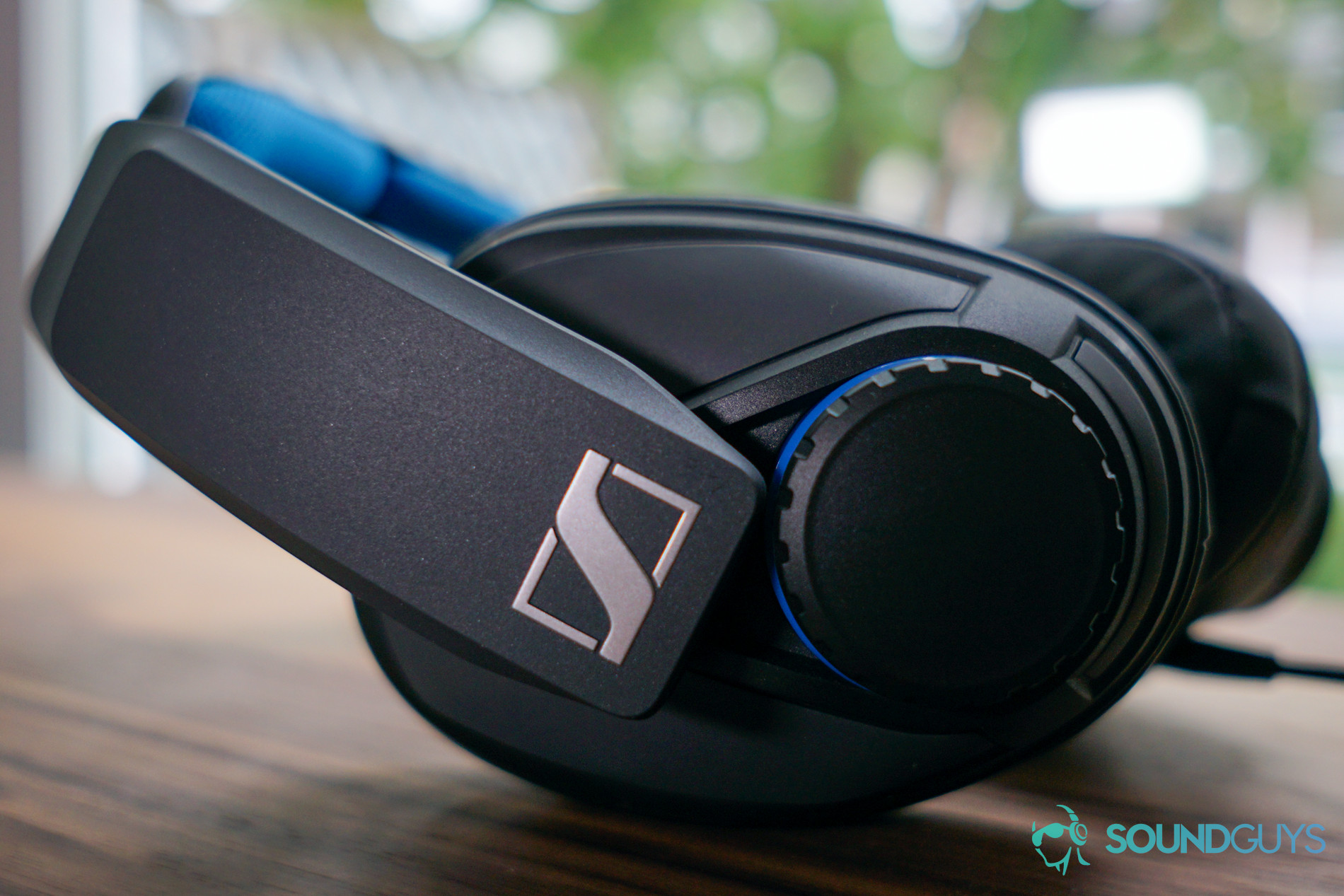
The Sennheiser GSP 300 is a good gaming headset—there’s no doubt on that front. However, the sub-$100 price range is perhaps the most packed part of the gaming headset market. There is an absolute glut of great options, and a ton of them offer considerably more features than this gaming headset.
In short, you could do a lot worse than the Sennheiser GSP 300, but you don’t have to look far to do better, too.

What should you get instead?
This headset is comfortable, sounds good, and it works on most platforms. However the HyperX Cloud Alpha is more comfortable, sounds better, and works on all the same platforms for the same price. Ditto for the SteelSeries Arctis 1 Wireless, and that also uses a USB-C dongle to connect wirelessly to an undocked Switch (and everything else using a USB-A adapter). There’s even the EPOS H3, the company’s new wired gaming headset, independent of Sennheiser.
This feels more competitive with headsets like the Razer Kraken X, Turtle Beach Recon 70, and Corsair HS60 Pro Surround. However, all of those headsets are considerably cheaper, and they all offer surround sound in one way or another.